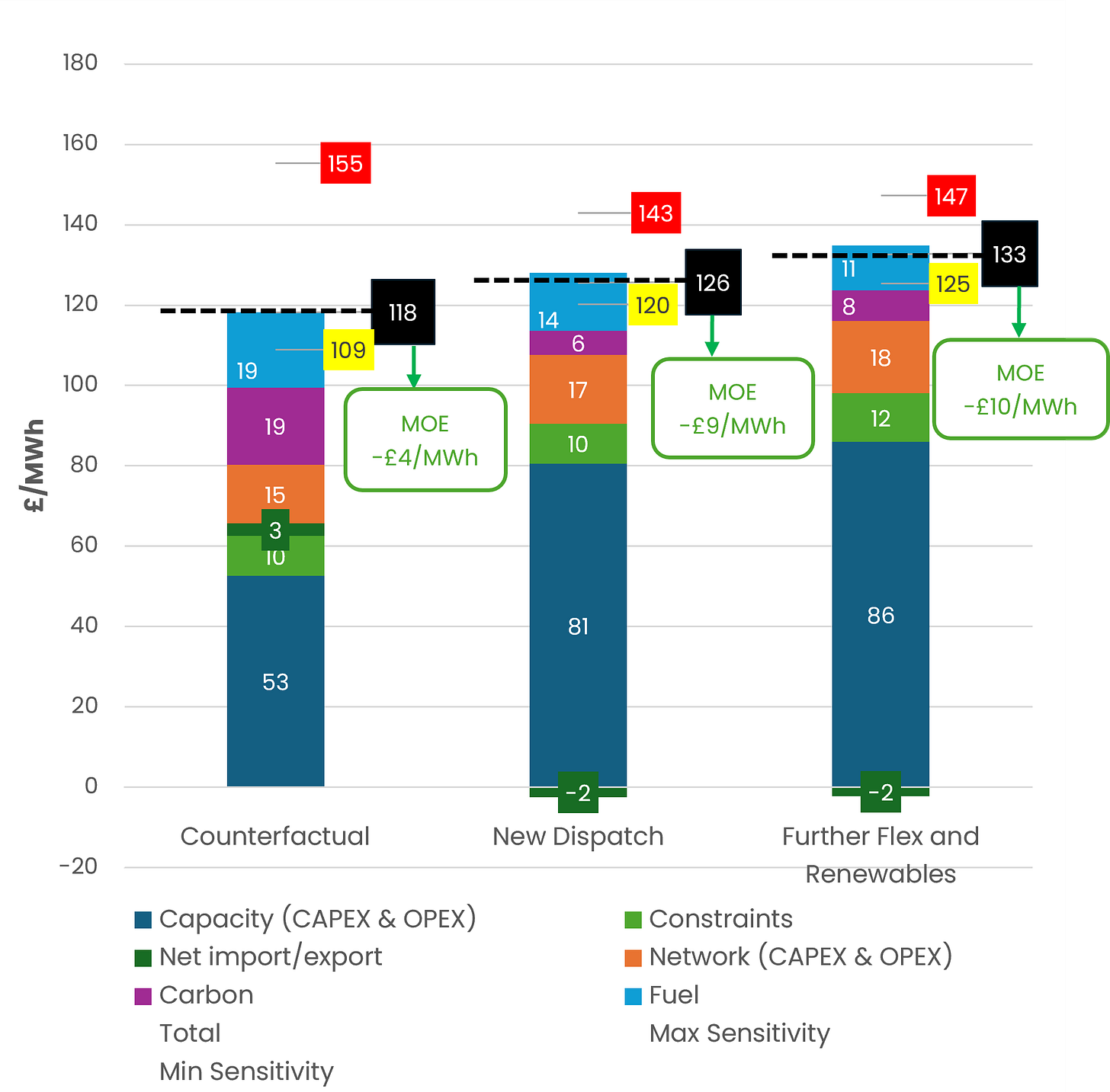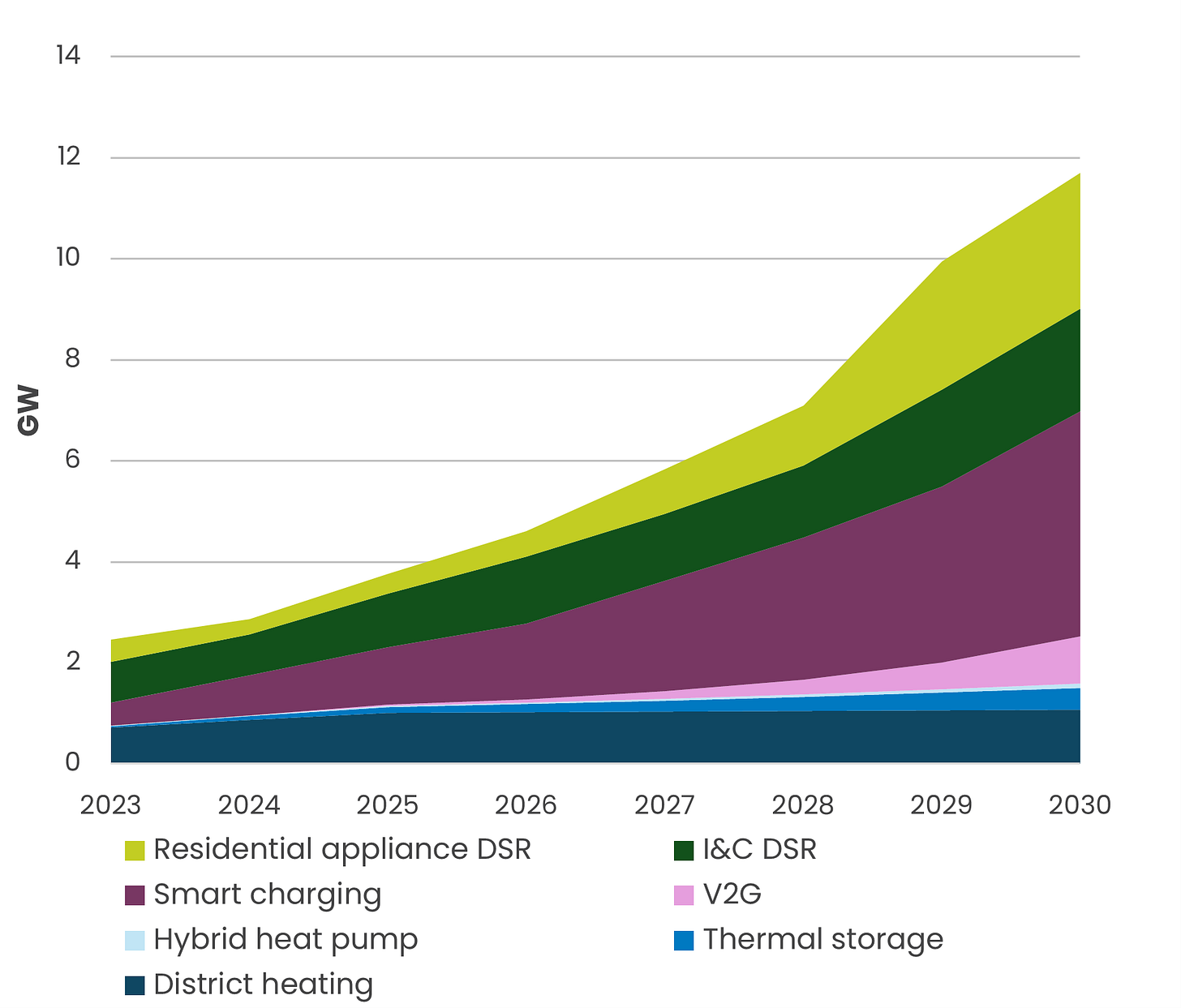Fintan Slye Outfoxes Mad Miliband on Clean Power by 2030
Net Zero Grid by 2030 only achievable if Miliband believes six impossible things before breakfast.
Introduction
Regular readers may remember that Energy Secretary Ed Miliband and his Head Of Mission Control Chris Stark sent out an SOS over the summer asking Fintan Slye at NESO how they would achieve their goal of a Net Zero grid by 2030. Slye responded with some weasel words about needing to first define what they meant by a clean power grid.
Now NESO has published its official response to Miliband and Stark. Broadly speaking, Slye had two choices. He could take the courageous route and tell Miliband and Stark that their goal was bonkers and there is no chance of achieving a decarbonised grid by 2030. But Slye does not want to become a climate apostate and lose his status as one of the high priests of the Net Zero religion, so he has taken the coward’s way out and at the same time put Miliband in a tricky spot. NESO’s response is essentially, yes of course it is a tall order to achieve a zero-carbon grid by 2030, but it can be done provided you achieve these six impossible things before breakfast.
The announcement would have us believe:
Spending £44-48bn per year, or £264-290bn by 2030 is achievable This is over 4X the average rate from 2020-2024.
Their plan is cheaper because gas prices will be above OBR estimates and carbon prices will rise nearly four-fold by 2030.
That residential demand can be cut by 20% and energy rationing, aka demand flexibility, will rise nearly five-fold by 2030.
The rate of offshore wind delivery can be increased by a factor of four, solar by 7X and onshore wind by 5X to 2030 compared to what has been delivered in the past five years.
We can install twice as many miles of transmission cables by 2030 than were built in the last ten years.
One of our aging gas-cooled nuclear reactors can be extended beyond 2028 and the first Hinkley Point C reactor comes online on time in 2030.
Of course, Miliband has accepted the headlines of the report, as seen in his Guardian article, without understanding the detail of what has been presented. Although emissions fall from 36.7MtCO2 in 2023, the grid will still produce 5.2-5.4MtCO2 in 2030, so the plan has failed at the first hurdle. In addition, his article fails to explain where the money is coming from or how to increase the rate of delivery by so much and he fails to acknowledge the risks involved. Slye has outfoxed Miliband, who has painted himself into a corner. Now any failure to deliver the plan can be firmly laid at Miliband’s door. However, while the political risks lie with Miliband, the economic risks of higher energy prices lie with us, the consumers. We will pay the price of this folly.
We will now delve into a bit more detail on each of the six impossible things Miliband must deliver before breakfast, if he is to achieve his Net Zero grid by 2030.
Eyewatering Spending of over £40bn per year
The report shows the eyewatering level of spending that is required to hit the clean power by 2030 target as shown in Figure 1.
This shows spending of £44-48bn per year from 2025 to 2030, or a total £264-290bn over the period. The data-book notes that the average spending from 2020-2024 was £11bn per year, meaning they are calling for a four-fold increase in spending.
However, this is not the whole story. The Cost Benefit Analysis Annex shows the source of their expenditure forecasts. They use the capex, opex and cost of capital assumptions from the Government’s Generation Cost reports. These have been shown to be wildly optimistic by the AR6 auction round that awarded contracts worth nearly double the £/MWh than the Government calculated. Moreover, we covered the offshore wind big lie here. Not only are the capital costs under-estimated, but the Government came up with their costs of capital when interest rates were close to zero, whereas the current bank rate is 5%.
In addition, the National Grid announced in 2022 that they would need to spend £54bn on the transmission grid by 2030, or £6.75bn/yr from 2023. This report assumes that can be cut to £4.7bn/yr, even though they are delivering more remote generation capacity than previously assumed.
Incidentally, the NESO report calls for very little Carbon Capture and Storage (CCS or CCUS) capacity coupled with either gas or biomass which calls into question the Government’s commitment to support £8bn of CCUS with nearly £22bn of subsidies over 25 years.
The Chancellor, Rachel Reeves has repeatedly (probably falsely) emphasised that she inherited a £22bn black hole. There is certainly no room to add £40-odd billion of extra Government spending, so this increase is going to be added to our bills. And because the spending estimates have been under-estimated, then our bills will rise even more.
Spend More and Electricity Will Be Cheaper
The introduction to the cost benefit analysis claims that after spending over £40bn per year, their plan “can be delivered without increasing costs for consumers.” I will say that again, they want us to believe that if we spend £264-290bn between now and 2030 to deliver only 11% more electricity it will not impact prices (see Figure 2).
Note that they use the conditional “can” rather than the absolute “will” to give them a weaselly get out clause. But even so, how do they arrive at this astonishing conclusion? To work that out, we must delve into the details of the appendices.
First they assume elevated gas prices out to 2030 (see Figure 3).
Second, they assume that the carbon price will almost quadruple to £147/tCO2 compared to today’s price of around £38/tCO2. It is only this by making these assumptions that they claim prices can fall. They also undermine their own claim in Figure 20, by showing that system costs are higher than their Counterfactual (basically stay the same) in both their Further Flex and New Dispatch scenarios (see Figure 4).
Although not directly comparable, their system cost range of £118-133/MWh compares to the average CfD reference price of about £65/MWh since April this year. We already have the most expensive electricity in the IEA. NESO plans are bound to increase bills because spending £48bn per year is the equivalent of over £1,700 per household each year. We won’t see that amount added to our bills because we will see it added as network costs and subsidies, but we could easily see bills rise by over £1,000 by 2030 to cover the costs of capital and operating costs. Miliband is bound to break his promise to cut bills by £300.
Energy Rationing
Remarkably, the NESO plan for a clean power grid by 2030 assumes that residential electricity demand will fall by 20% from 100TWh in 2023 to 80TWh (as seen in Figure 2 above). They make this assumption despite Government plans to roll out 600,000 heat pumps per year which will mean we consume less gas, but our electricity consumption will rise markedly. They also want many of us to be driving EVs by then, but it isn’t clear how much EV demand they are including in residential as opposed to transport demand. Either way, this is a simply astonishing assumption.
They also want to increase what they term “demand flexibility” nearly five-fold by 2030 from 2.5GW to 11.7GW, see Figure 5.
As part of this, residential appliance demand side response (DSR) must increase six-fold from 0.4GW in 2023 to 2.7GW in 2030. To achieve this, Miliband may well enact the regulations contained in the Energy Act 2023 which give the Government the power to grant the power for a central agency to take control of appliances such as EV charging points, home heating, batteries, fridges, dishwashers and washing machines (see Figure 6).
Welcome to the dystopian Net Zero world of energy rationing, where Ed Miliband decides when you can have your heating on.
Accelerate Renewables Delivery
To meet their whacky target, offshore wind capacity must increase from 14.7GW in 2023 to 50.6GW (Further Flex Scenario) in 2030. Onshore wind goes up from 13.7GW to 27.3GW and solar from 15.1GW to 47.4GW. The databook calculates what this means in terms of the increase in the rate of delivery compared to historical averages. However, they use 2012-2018 as the comparator years for onshore wind and solar. If you use the past five years as the comparator, the solar rate of delivery must increase seven-fold compared to the past five years, up from the three-fold increase calculated by NESO. For onshore wind the multiplier goes up from less than two times to nearly five times. The offshore wind multiplier drops slightly to 3.9 times the recent rate from 4.5.
Incidentally, NESO also calls for battery capacity to increase more than 8-fold to 49GWh by 2030 too.
It is inconceivable that this level of acceleration can be achieved, not least because there is little chance the required capacities will be awarded by the annual allocation rounds and even less chance they will all be delivered on time. Moreover, rural communities will no doubt oppose covering the landscape with more wind turbines and plastering agricultural land with solar panels.
Accelerate Grid Expansion
The report acknowledges (p31) that their clean power system will need to move more power over greater distances. This is a consequence of connecting dozens of remote renewables to the grid so the electricity can be sent to the source of demand. They say that with no grid expansion, gas generation would fall to only 8.1% of generation instead of 5%. So, the £28bn of spend is offsetting just 3.1% of gas-fired generation. This hardly seems like a great return on their stated £28bn of spending.
The grid expansion they are planning will require 1,000km on onshore and over 4,500km of offshore cable to be delivered by 2030. This is double the total built in the past 10 years. We can safely file this item under “never going to happen,” especially because there is already a shortage of cable.
Gambling on Nuclear Life Extensions
The dash for more intermittent and unreliable wind and solar means we will be short of firm power by 2030. The NESO report at least partially recognises this, because it makes some ambitious assumptions about the availability of nuclear power. First, it assumes that one of our remaining gas-cooled reactors has its life extended to beyond 2030. We have four of these units with capacities averaging about 1.3GW each. Hartlepool has had its life extended several times from its original scheduled closure in 2009 and is now due to shut down in 2026. Heysham came into operation in 1983 was due to be shut down in earlier this year but has had its life extended to March 2026. EDF is considering extending the life of Heysham 2 and Torness plants which began operating in 1988, but it is far from certain that this will happen because both plants had their closure dates brought forward to 2028 from 2030 in 2022 and are already operating well beyond their original 25-30 year design life.
The NESO plan is also assuming that the first Hinkley Point C reactor comes online in 2030. However, the project has been plagued by delays and EDF’s is estimating that the plant will come online somewhere between 2029 and 2031. It is certainly not beyond the realm of possibility that it will not be online by 2030.
This adds to the risk that we will not have enough firm and dispatchable capacity by 2030 to meet peak demand.
This problem is further illustrated by tab CP17 in the databook. They define weather dependent renewables as wind and solar, firm power as nuclear, hydro, CHP and energy from waste. Dispatchable power is biomass, pumped hydro and gas with or without Carbon Capture (CCS). Flexible capacity is interconnectors, batteries and residential DSR.
Using this data, we can calculate the potential shortfall in firm and dispatchable supply if we hit peak demand during an extended winter wind lull like are experiencing now (see Figure 7).
Wind lulls can extend for days on end, so we can expect the 49GWh of batteries will run out in a few hours. If we give NESO the benefit of the doubt and assume their planned nuclear capacity is online in 2030, then the shortfall in firm and dispatchable capacity will rise from 1.2GW in 2023, to 10.9-13.7GW in 2030. On today’s grid, we might expect that shortfall to be met by interconnectors and the residual generation from wind. At peak winter demand, solar will not be producing anything.
However, last night we were getting just 2GW net from the 8.5GW of interconnector capacity and less than 1GW from wind. It is difficult to believe that in 2030, we would be getting anything like the full 12.5GW from interconnectors as wind lulls often cover most of Europe. Even tripling wind capacity would give us only about 3GW, so the shortfall would mean either the lights go out, or draconian rationing measures are taken such as cutting off home heating or asking factories to close.
If the nuclear capacity planned is not there, even the maximum DSR measures are unlikely to meet the shortfall and we would be in big trouble. This is not increasing energy security as Chris Stark has claimed.
Conclusions
It certainly looks like NESO have pulled a fast one and given a credulous Miliband a plan that requires us to believe six impossible things before breakfast. Fintan Slye has outfoxed Mad Miliband, who will now use this report to rush headlong towards a decarbonised grid by 2030.
Or maybe Slye has just followed orders, because NESO is not independent. It is controlled by none other than the Secretary of State for Energy and Net Zero, one Ed Miliband. Miliband has the power to hire and fire directors, so it could be that Slye is just in fear of his job.
So much for independence. Miliband will eventually pay a heavy political price and the rest of us will pay the economic price through lost jobs, higher bills and energy rationing.
If you enjoyed this article, please share it with your family, friends and colleagues and sign up to receive more content. This week’s main article will exhort our free-market think tanks to start thinking again.












Fintan's lie or Fintan's sly. It really doesn't matter which. Mad Ed's Wet Zero dream is going down in flames - but it remains to be seen how much of the UK economy and our beautiful countryside it takes with it.
David, thank you for another great unveiling of energy supply reality. This is another troubling reminder that politicians can (and do) claim almost any result by making impossible assumptions, and by glossing over all sensible cost-benefit analyses. Miliband will of course fail badly but the cost to UK Ltd of his mad zealotry will be far, far worse than previous epic cost overruns such as HS2.